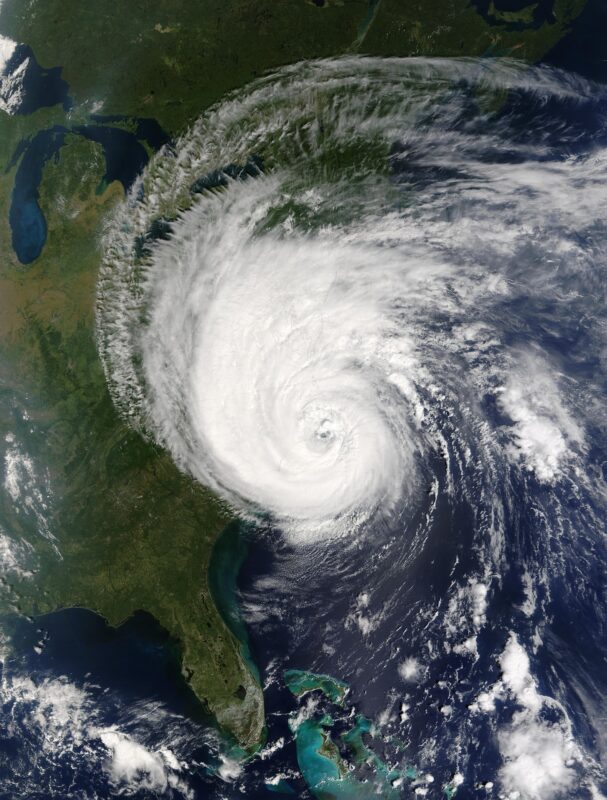Hurricanes and Children

Another hurricane swept past Florida, but not where I (Karen Whiting) live. It ended up at the big bend of the west coast of the state, and was not as powerful as anticipated (thankfully). I live on the east coast south of hurricane’s path so we had a little rain and some wind. The wind was much less than our summer thunderstorms. California recently faced a storm that proved to be less than the media’s hype. Natural disasters happen around the world and it’s good to help our children understand these dangerous weather conditions. Read about Jesus calming a storm in Matthew eight and how God is greater than any storm. For my own family when winds from Hurricane Andrew were blowing off the roof tiles and breaking windows when we read that story, prayed, and the wind stopped.
A satellite photo shows this swirling pattern. Let children know it means really strong wind. Have them blow on tissue paper and see how they can make it move and fly around. Let them know when winds are really humongous it can be strong enough to move cars and house like tissue paper. Avoid fear reminding them that God is always with us, even in storms. Discuss how weathermen watch hurricanes from and move across the ocean to land. That gives people time to leave if it might come their way. Discuss how insurance helps us repair and replace items from damages. Be sure to keep papers together in case you need to evacuate. Know where items you would want to take are to locate them quickly from jewelry to bonds.
Be prepared for natural disasters. One way is to keep a folder online, maybe a hidden page of your website, or send info to a friend or family member. This should include photos of every room as well as important information like insurance policy numbers (you can use a code to store them). After a disaster take new photos to show the damages and compare photos to identify losses.
Have you child shop and help choose items for an emergency box. Include canned food that can be eaten without power, solar lights, first aid kit, matches, candles, flashlights and batteries. Check online for what else to include. As a family pack the items in a waterproof container. Discuss how we also pray-pare by daily praying for safety.
When there’s a small storm like rain with a little wind don your raincoats and boots and go outside to feel the wind and see the leaves blow harder. Enjoy puddles after a storm and discuss how rain can cause a flood and water to rise.

Read books about weather and storms so children will understand them better. When we have knowledge, we have less fear. When we teach that a storm is merely passing through and the winds will end, we can help youngsters feel safer. Practice what to do in an emergency like an earthquake or tornado. even when I lived in Maryland we had an unexpected earthquake (seldom ever happens there) and a had a house full of children at the time. One asked, “Hey, Miss Karen how’d you make your house shake?” I calmly asked them all to sit on the floor in the center of the room and stood against the only piece of furniture than could move. Read about a disaster where you can send money or items and do something to help as a family like giving up dessert for a week and sending the money saved or collecting items and sending them.
The more we engage children in prayer and teach them to pray, the ,more they will trust God. That’s why I wrote a book for families to explore questions kids ask about prayer with a different way to pray every week (52 ways to pray as a family).
Blessings,
Karen Whiting. #Childresbook #christianhomeschool #Naturaldisasters #Childrenandfaith #KarenWhiting

Excellent and resourceful post about hurricane preparedness keeping the children involved. Thank you for sharing your experiences as well.
Thanks.
We noticed one big difference when we engaged our children in the hurricane clean up from people who shipped their children to grands. Those who helped soared and those who did not had many emotional problems and fears as they were not engaged in the process of overcoming the damages.(not all, but the majority). In Miami after Hurricane Andrew there was a problem of children just laying down in the street to be run over due to their feelings of helplessness (very tragic and mostly kept out of the news).